


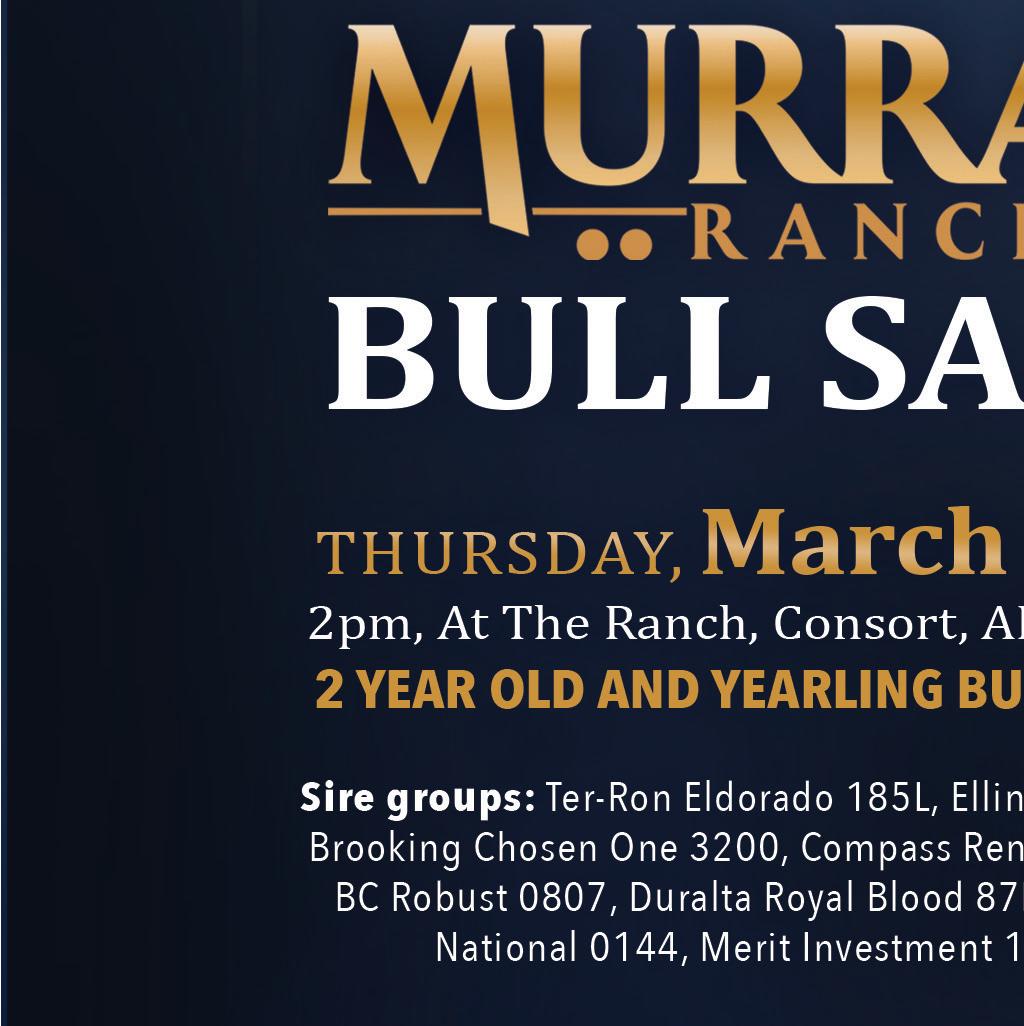














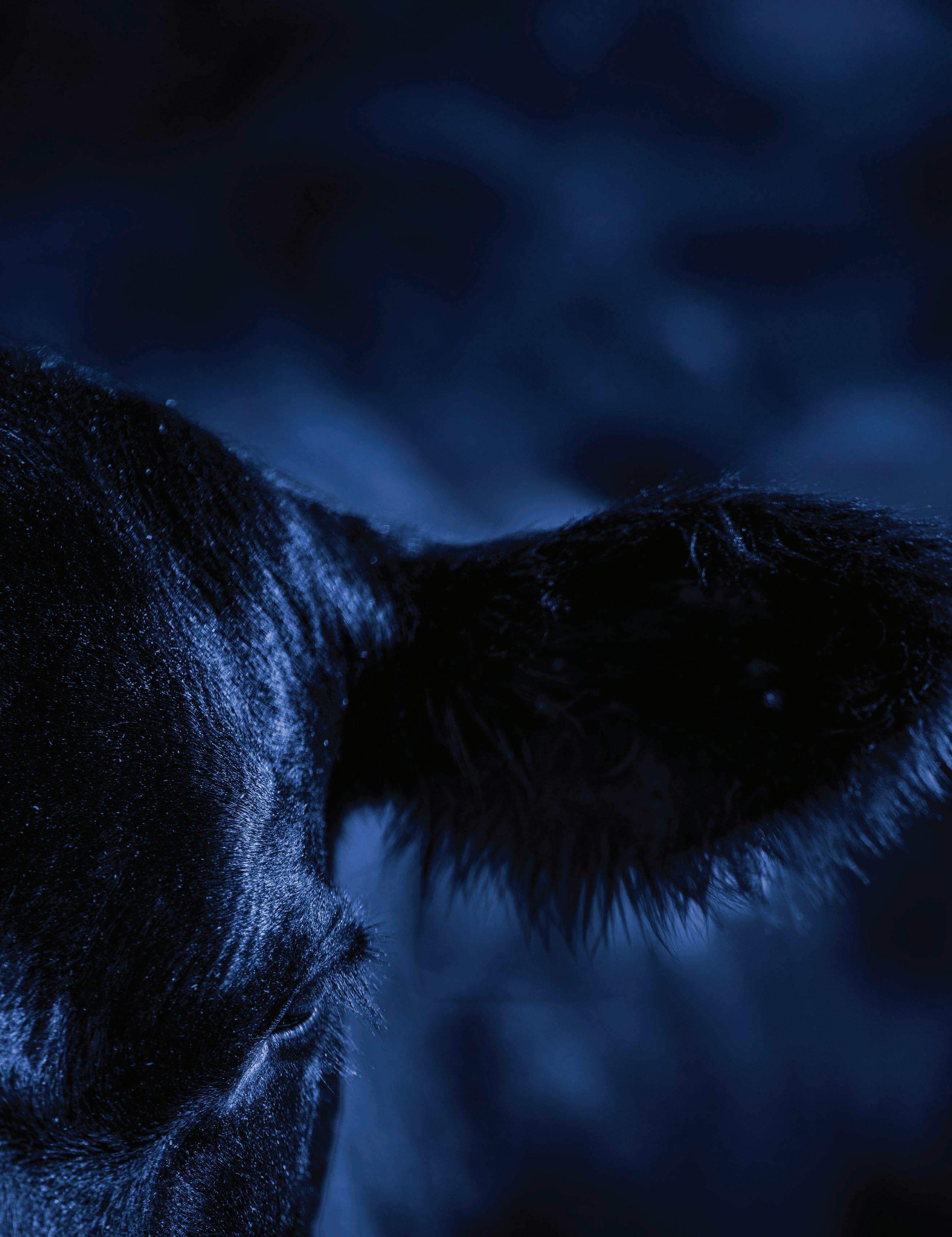










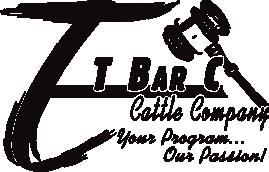






































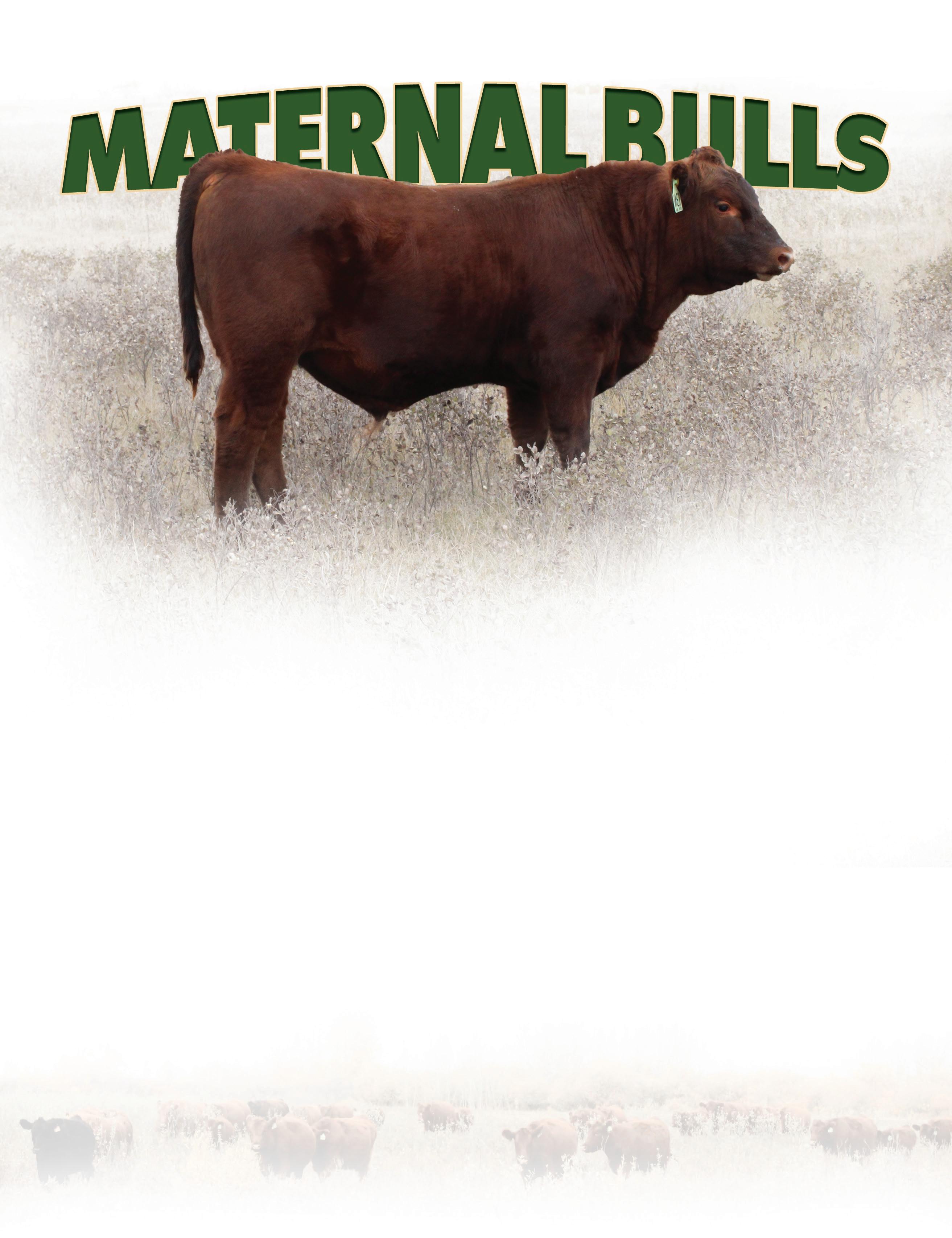




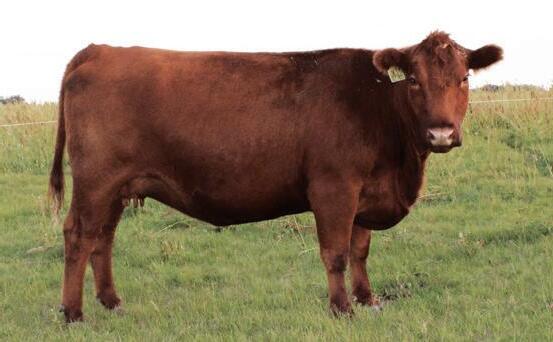

















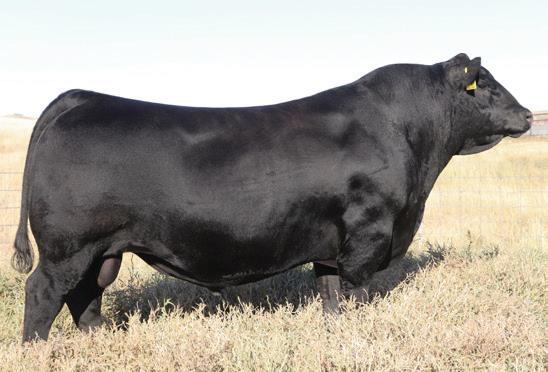






REPUTATION ANGUS genetics stacked with generations of MATERNAL PERFORMANCE, designed to ADD REAL POUNDS and VALUE to your calf crop, MATERNAL STRENGTH to your cowherd and DOLLARS to your bottom line: THE HIGH PROFITABILITY KIND. . .
Featuring a vast number of embryo progeny from our proven, top-producing donors, as well as large sire groups by Badger, Courage, Charisma, Magnum, Throttle, Renovation, Rise N Shine, Royal Flush, Rise Above, Colossal, Architect, Anthem, Downpour, Duke, Dexter, Credential, Gable, Grant, Gunsmoke, Grand Canyon, Glory Days, Smokehouse, Territory and more.

He sells! Royal Flush x SAV Abigale 2432. Represents the kind we strive to produce with natural thickness, capacity, fleshingability and real-world performance. His Territory x Charlo dam is a model of efficiency and records a weaning ratio of 107 on her first two calves.

He sells! Courage x SAV Emblynette 2330. SAV Creation 5397 proudly represents the first calfcrop by SAV Courage 3003, the lead-off bull of the 2024 SAV Sale. He presents an optimum blend of calving-ease, maternal and performance with phenotypic power and presence. He earned a 205-day weight of 1025 lbs. for a weaning ratio of 113. His 3-year-old dam by SAV Ease 0840 is moderate-framed and feminine with a beautiful udder from the Emblynette family that was established at SAV in 1946.



February 14-16, 2026
Inn at the Forks, 75 Forks Market Rd
Winnipeg, MB
Registration deadline January 10





Application deadline January 1
Bursaries of up to $1000 will be awarded to 12 deserving Canadian Junior Angus members from anywhere in Canada.
Bursaries must be used within the same year awarded to help offset travel and registration costs for attending the GOAL Conference.


promotes leadership skills within the Angus breed. Junior members from all over the nation attend this three-day event that is held in a different location each year. During GOAL the Juniors hear from motivational and educational speakers, participate in workshops, get involved in teamwork activities and develop beef and industry knowledge. Juniors are also given the opportunity to network and socialize with fellow Junior Angus members.
Please stay tuned for more details www.cdnangus.ca/canadian-junior-angus/goal Watch our Facebook and Instagram pages and visit our website for more details on 2026 scholarship deadlines, awards and other events.
For more information contact Belinda Wagner, Canadian Junior Angus Coordinator, at 306-537-1518 or bwagner@cdnangus.ca

GLEN ISLAY HEADLINE 23J X GLENNIE PRIME CUT 4A
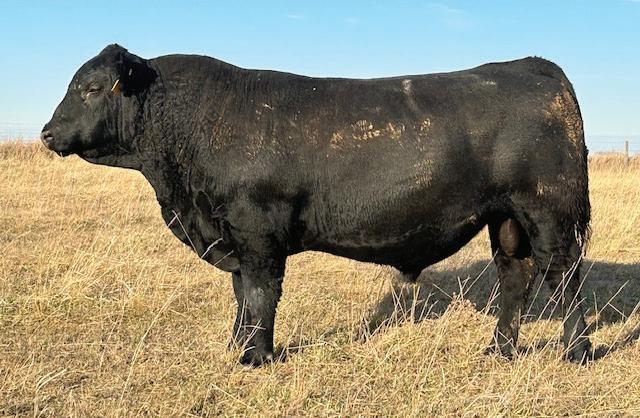
GLEN ISLAY KILLARNEY 14K X CONNEALY ARSENAL 2174

The predominant sire of females in our herd.

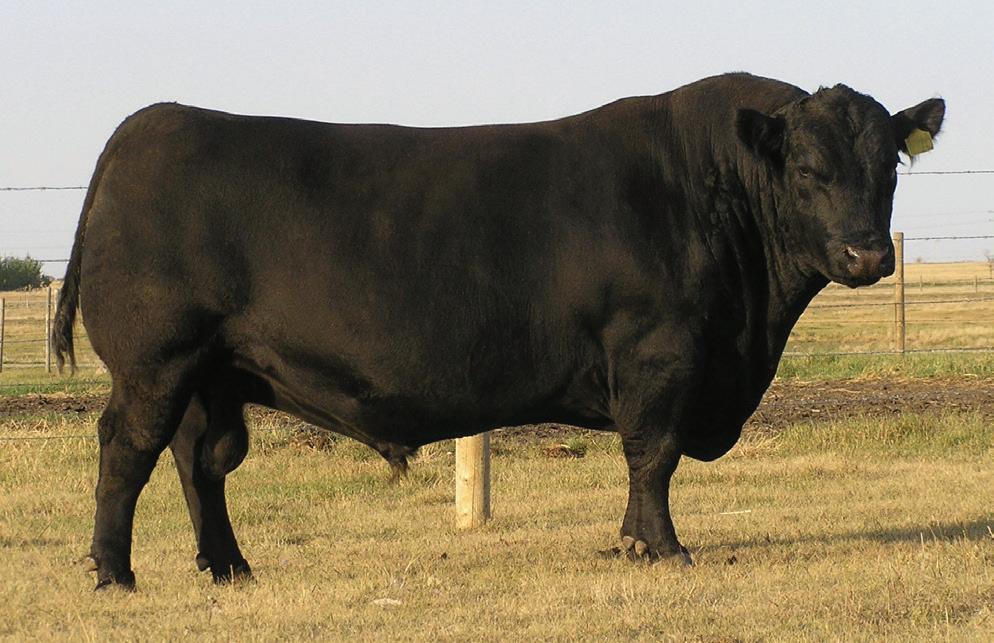









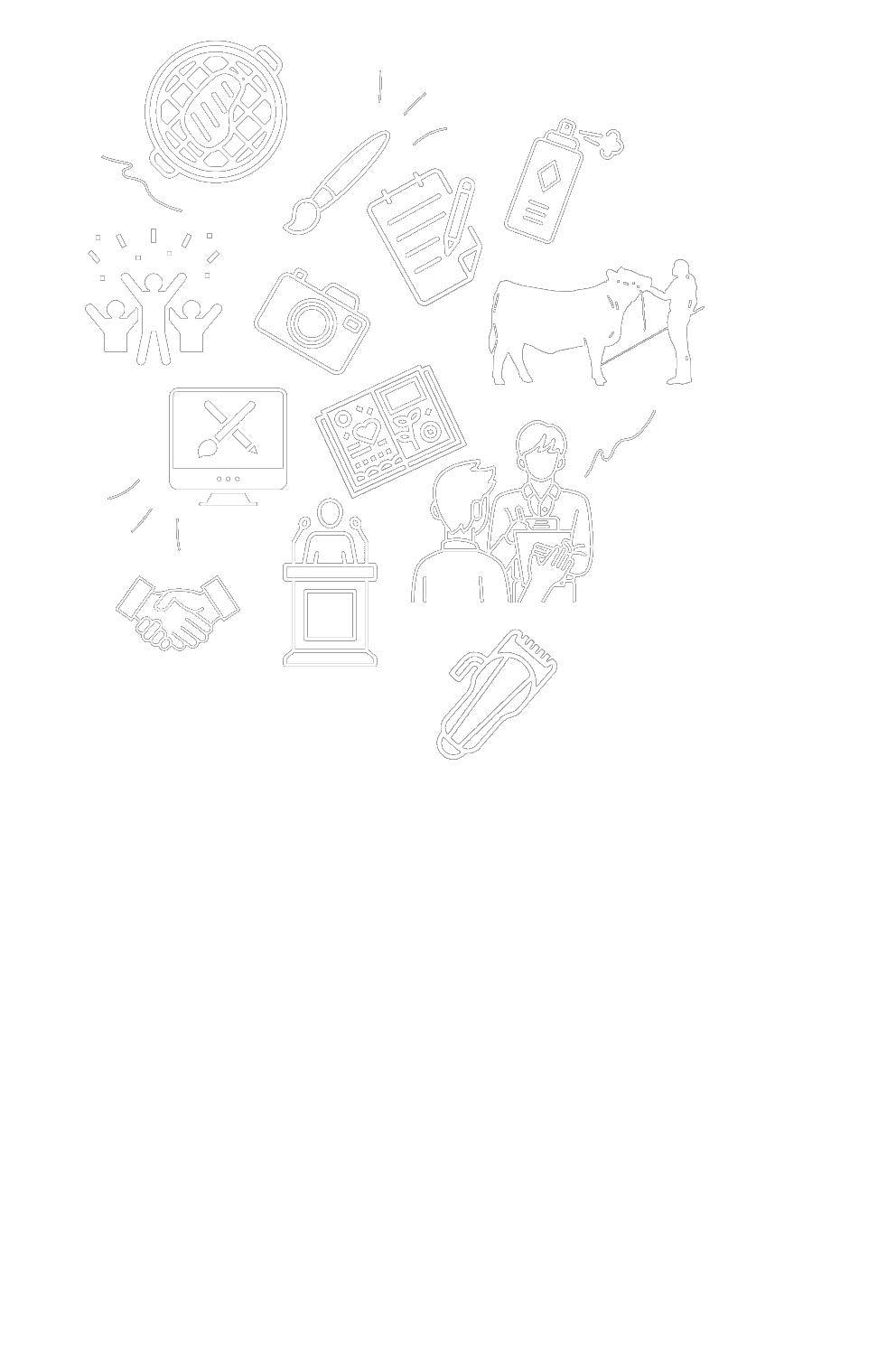









Thursday, July 16, 2026
The Canadian Angus Foundation will provide travel and trucking bursaries to attend Showdown as well as significant cash prizes and scholarships for the Aggregate Winners. There will also be three draws made for vouchers to purchase Angus females—one at $3,000 and two at $2,000. All exhibitors will automatically be entered to win!
Visit the Canadian Angus Foundation website at www.cdnangus.ca/foundation for more information and to apply for the bursaries.
For up-to-date Showdown information or to enter online, please visit www.cdnangus.ca/canadian-junior-angus/showdown
Belinda Wagner • Coordinator: 306-537-1518 or bwagner@cdnangus.ca MOVE
Allison Morse, Quebec Director: 819-212-7177
Kylie Willms • President: 306-380-4595
11 am • Move in complete • CJA Annual General Meeting & Orientation
12 noon • Lunch 12:30 pm • Judging (individual competition – written reasons) 1:30 pm • Team Grooming 5:30 pm • Supper & Extravaganza
Friday, July 17, 2026
8:30 am • Group Photo
9:00 am • Showmanship
9:00 am–1:00 pm • Print Marketing
12 noon • Public Speaking
1:00–4:00 pm • Sales Talk
2:00 pm • Team Judging (must qualify from individual competition) 6:00 pm • Cook-off & BBQ
Saturday, July 18, 2026
9:00 am • Heifers of Distinction 10:00 am • Conformation Classes 5:00 pm • Banquet, Awards Presentations, Auction & Dance



Federally inspected cattle harvest head counts have swung widely in the past three weeks, beginning with a 14,000 head decline two weeks ago as one fed cattle plant idled several days for scheduled upgrades. Last week’s recovery from the downturn pulled the week’s total 9,000 head larger than the six-week average. Late last week, President Trump made statements about potential action to lower beef prices through purchases from Argentina.
That brought an abrupt end to a precipitous nine-day run in which nearby Live Cattle contracts rose more than $13/cwt. without correction. Friday’s Feeder Cattle futures were limit-down and Live Cattle futures traded sharply lower as a result.
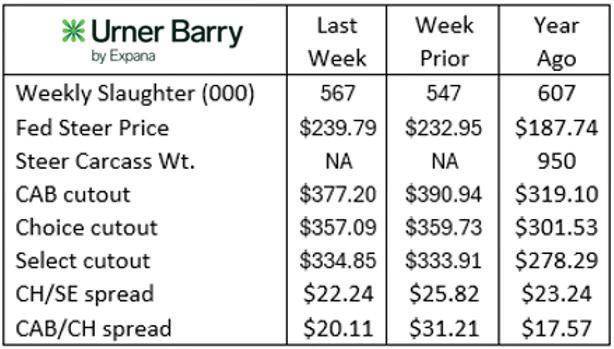
Follow-up trade early this week showed resiliency in futures prices as the market has shrugged off the President’s comments, regaining much of the price slippage incurred on Friday. For instance, the April 2026 Live Cattle contract touched the high-water mark of $250/cwt. last Thursday before settling $7.28/cwt. lower by Friday’s close. By Tuesday morning, a $3.05/cwt. recovery pulled the April contract up to $246/cwt.
Cash fed cattle prices last week showed no resemblance to Friday’s futures setback with fed cattle averaging $239.79/cwt., a $6.84/cwt. increase on the prior week. Seasonal increases in wholesale cutout values are expected to continue at least through the end of October. This potential, along with strong packer demand to capture a large head count last week, has propped up prices for now.
The typical October beef market is marked by a strong swing in carcass cutout values as a lull in demand follows Labor Day, sending cutout values to a seasonal low beginning in October. The turnaround happens quickly, with cutout values in early October 2% below the year’s annual average. By month’s end, prices averaged 1% above the annual average in the last three years. In order for this pattern to repeat in 2025, the Comprehensive cutout would need to gain $10/cwt. in the next 10 days. This would be a fairly large lift, but not out of the question. One factor we must bear in mind is that 2025 wholesale carcass prices have varied

Paul Dykstra
widely within a range of $87/cwt. This compares to a much tighter average trading range of just $25/cwt. in the prior three years. This year’s Comprehensive cutout values are averaging 16% higher than last year, therefore, a 3% shift means a larger dollar value move than last year.
The above information seems less closely tied to potential fed cattle prices this season since a significant disconnect exists between cutout values and fed cattle values. Packers have, after all, run deep in the red for many months this year. Narrower margin losses do, however, encourage larger harvest levels.

A look at individual beef cuts and seasonal price trends for the fourth quarter reveals a few impactful cuts will shoulder the load toward higher prices. It’s evident that ribeyes and tenderloins come into focus for the holidays. Even so, the steep uptrend began in August for these items, leaving seemingly less upward lift available. Most would agree that despite current price levels, 20-30% higher than a year ago, new recordhigh prices are in the cards for early December.
Strip loins have continued to be sought after as the cheaper steak and roast item substitute for the holidays. Yet their growing popularity is holding strip loin prices on a higher plane this season. A few other items with impressive price points include shoulder clods and briskets, the latter of which are supported on smaller head counts and processer demand ahead of corned beef season.
A final optimistic note for cattlemen is the widening of the USDA Prime cutout price spread above USDA Choice; the latest spread is $57/cwt. This bolstered average Prime grid premiums to $22.42/cwt. earlier this month and comes at a time when Prime carcass production is seeing an uptick.
Nebraska takes the prize among the largest packing states as feeders in the region are delivering 14.6% Prime carcasses to packers, a big move from the 10% level seen the same week last year. Kansas and Texas grade trends are similarly impressive, with Kansas up to 9.7% and Texas closing the gap at 8% Prime.


Using A.I. and Camera Technology to develop phenotyping systems to measure traits for members
There are three main areas of focus in this project with associated outcomes:
• Developing camera and A.I. technology to help measure and record subjective traits
Along with traditional classification by trained Holstein Canada Classifiers, we will develop technology that can help producers collect standardized and accurate information on subjective traits like teat score, udder score, foot angle score, claw set score, body condition score and docility. This technology can be used to collect many more traits and measurements.
• Developing camera and A.I. technology to help measure and record carcass quality traits
Included in the project objectives is collecting both ultrasound scan data and abattoir data on carcass quality traits.
Members who do not currently use ultrasound scanning, or receive carcass quality information back from the abattoir can contribute to this project’s objective. Both ultrasound scan and abattoir carcass quality information on Angus and Angus cross animals will contribute significantly to more accurate GEPDs for these traits.
• Developing camera and A.I. technology to help measure and record health traits
Expanding on our previous work to characterize high immune response in Canadian Angus animals, this project will allow us to collect additional phenotypes for traits that impact animal health and welfare.
Acknowledgements
This project has been made possible by major investments from Agriculture and Agrifood Canada (AAFC) through the Sustainable Canadian Agricultural Partnership (Sustainable CAP).
Canadian Angus Association members wanting to participate
We have an ongoing project to support members collecting information on subject traits, health traits, and carcass quality traits. If you are interested in having a trained classifier measure and record mature cow traits (mature cow weight, height, body condition score, docility, claw set and foot angle) please contact us at klatimer@cdnangus.ca or 403-537-5604. Mature cow traits must be collected within 45 days (+/-) of taking weaning weights on their calves. This service is provided at no cost to you in part by funding from Agriculture and Agrifood Canada and Sustainable CAP.
Canadian Angus members who would like a trained scorer to measure and record subjective traits for mature cows this fall (+/- 45 days of calf weaning weight), or on yearling animals next winter, can contact the office to schedule a classifier or ultrasound scan technician and a High Immune Response Test technician. To participate in the project please contact Dr. Kajal Latimer at klatimer@cdnangus.ca.



By
I don’t think this research has ever been done but if one were to track purebred bull calves from an early age until sale we would find the two top reasons for culling, selling, death, and other losses are fertility and injuries.
I would include lameness in this tally as a high percentage of them in breeding bulls results initially from injury. In this article I am reaching out to you cattle producers for practical tips you may have on reducing the numbers of injuries/lameness we get on either raising bulls for sale or in keeping our herd sires breeding. I am going to share some of the things I know or have learned over the years.
If you send me your ideas this may call for a follow-up article under the auspices of improving health and welfare of our purebred bull calves through to maturity. We all hate to see that one injured bull so close to their productive life. With riding behavior in young developing bulls the sooner we know they are culls they should be castrated and, if you want implanted at that time to maintain growth almost equal to their intact male counterparts.
Banding the too high birth weight bull calf for castration at spring processing because of phenotype structure or not the right color will decrease riding, fighting and avoid the castration risk at an older age. I can safely say all, or almost all, breeders when natural breeding have bull calves and their mothers separate from the cows with heifer calves. Ideally non-pregnant cows are removed, as we all know the riding frenzy that occurs from multiple young bull calves going almost vertical trying to breed a large cow. This is how the rectal prolapses occur in the summer. We can almost guarantee the calves that develop these prolapses have good libido. On repairing if the
sutures are left in a little longer these may scar down a bit better.
I have done several semen tests over the years where we need to use a very small probe as the rectum has scarred down. Bull calves at this time are also prone to damaging primarily their hocks or hips on young still developing bone and cartilage with easily damaged growth plates especially on the ends of the long bones.
A lot of injuries at this age may be permanent unfortunately. One thing the poor conformation bulls will really show themselves as feet and leg problems are exacerbated. When weaning bull calves always need to have lots space, some have rocks to rub on others have cage type things for calves getting ridden to hide in. Severe riding behavior can take out many of the bulls being ridden.
A more common injury is the hip joints and the cartilage getting stripped away resulting in severely shortening stride. A couple things I have seen here is making a decision to remove quickly or remove treat and place back. Here is a place for quick use of NSAID’s maybe repeat treatments and some now are spraying vinegar over the back in the hopes of masking the smell and making the introduction back into the pen more favorable. No different than feedlot cattle keep the bull calves well fed. Anything that leads to boredom and crowding absolutely leads to more riding. Give lots of feed bunk space and access to water and pens that have no trapped corners. Again devices such as brushes and oilers go a long way to avoid boredom. The oilers can even run with just the oil and medication should only be put in at the times needed to treat lice in fall and face and horn flies in summer.
This applies to your herd sires when resting in the non-breeding season lots of space and room to move ideally. Watch the bedding in the winter to avoid frozen testicles and remember to give the preventative vaccines and deworming treating for lice and flies that you do to the rest of the herd.
They are sometimes the forgotten group and many of these things can be done at semen checking time next spring. It is interesting if insuring your bulls that no claims for foot rot are allowed if the bulls have not been vaccinated. We all know many of the lamenesses in bulls are injuries, sole abscesses, and not foot rot. The worst thing for you as a cattle producer is to have a bull become really lame just before breeding season.
Having the feet trimmed also helps prevent injuries from long hooves breaking off when breeding, fighting or simply slipping. Preventative hoof care goes a long way to helping prevent these injuries. Single sire matings prevent bull issues in breeding season but that is only if convenient and the bull better be fertile. I do believe we need to look at the incessant fighters and instigators, I know many a producer where certain bulls are continually fighting knocking bulls
out the breeding program. These bulls are the same problems in the bull pen in the off-season. Have no hesitation culling a problem bull, fighter or for other reasons that make handling unsafe or stirs up the rest of the bull battery. With transporting bulls it goes without saying to haul with pen mates use partitions in the trailer when necessary and use low stress handling techniques. Some bulls handled poorly seem to snap and never recover. A tranquilizer for a long trip could be in order.
Try the vinegar to mask the smell when mixing and see if there is any merit in it. There are now the anti-stress products like FerAppease, DeStress or the latest product called Cattle Zen which do the trick as far as maintaining appeal. Again, if any tips/tricks you have seen to minimize problems with raising bulls or wintering them please let me know. The new saying or trend is calling this enrichment and increasing enrichment should conversely decrease injuries.
Contact me at lewisroydvm@gmail.com if any great ideas you are using that could be shared with fellow producers.


- By LINDSAY GRABER RUNFT
Quantity and quality, the yin and yang to Certified Angus Beef ® brand product supply. While overall cattle herd numbers are down, carcass weights are up. And so is the overall quality for carcasses moving through packing plants. That’s the harmony for Certified Angus Beef (CAB), and a theme of the 2025 CAB Annual Conference.
A record-high 800 registrants from 17 countries gathered in Austin, Texas, to learn more about the Certified Angus Beef ® brand, become inspired by the culinary work of chefs and pitmasters, and celebrate sales and production success. But at the forefront: supply and demand, a reflection of the chaotic past year, and preparing for what’s ahead.
In his annual State of the Brand, CAB president, John Stika, noted that the forecast for CAB’s annual sales volume looks to be one of the strongest years for the brand. That said, it’s not been without some peaks and valleys. “The reality is that it’s [sales volume changes] more of a reflection of the price, supply and trade dynamics that we’ve seen,” Stika said. “They have created uncertainty in the market that we’ve dealt with, and are going to continue to deal with.”

Marking the 25th time to speak at CAB Annual Conference, Randy Blach, chief executive officer at CattleFax, provided market analysis and insights for the beef industry. When it comes to overall supply, Blach said that we are currently in “the eye of the storm.” CattleFax’s 2025 forecast came to fruition: low herd numbers and high prices. Blach said then that prices were expected to peak approximately one year before the absolute low in supply.
Looking to next year, CattleFax forecasts that we will reach our beef production low at 25.7 billion pounds, largely because of the Mexico border closure and tariff levels on the markets where we import lean beef. Because of the New World screwworm threat, feeder cattle imports from Mexico are expected to be down more than one million head from a year ago—provided that the border stays closed through 2025.
“The market isn’t short on tonnage or supply, it’s short on cattle,” Blach said. With a value system based on weight and quality, there has been incentive for cattle producers to keep feeding cattle longer. And that’s had a positive effect on beef tonnage numbers.
Currently, steer and heifer slaughter—the source of high-quality fed beef production—is down 43,000 head of cattle per week versus 2022, when this cattle cycle reached its peak. The Mexico border closure has had an impact on those numbers, too. On a typical weekly basis, approximately 25,000 feeder cattle cross the border from Mexico.
Blach said that futures markets will anticipate the low in supply, with prices usually reaching their peak before we hit the supply low. The market could stay elevated, but it is currently higher due to tariffs and the lack of international market access.
Deferred live cattle futures have been in the driver’s seat of the markets. After the markets closed in early July, and with the Mexican border closed and Brazilian tariffs in place, deferred live cattle futures contracts (Dec., Feb., April) went up about $30 per hundredweight. That resulted in $60 per hundredweight in feeder cattle prices and calf prices up about $100 per hundredweight.
“The market has had one heck of a run,” Blach said. But for the million-dollar question: when will it reach its peak? Because of the chaotic times, economists have not been able to predict that. Secondary to market-related questions, the next question is, “When will the herd rebuild start, or has it already?”
A herd rebuild has begun—albeit slowly, Blach said. Partially because of 8% interest rates, this cattle cycle’s rebuild will be slower than the last. According to CattleFax, commercial cow slaughter is down 30% and replacement heifers are estimated to be up 300,000 head. But what about the beef on dairy population? With 9.5 million dairy cows and 28-29 million beef cows, the total cow herd is increasing. It is estimated that beef-ondairy cattle slaughter is 4-4.5 million head, or 18% of total fed slaughter.
Blach noted that production for all proteins—beef, pork and poultry combined—is record high. And per capita red meat and poultry consumption is up, too. Consumers currently have an abundance of protein choices.

“Supply has been flat, but prices have gone up,” Blach said. “What’s that tell you? Demand is rocking!” With stability through spring and summer, beef demand is at a 40-year high.
“Beef is not just having a moment,” Anne-Marie Roerink, 210 Analytics, said. “It is growing a momentum and we’re seeing very high consumption of beef across all areas of the country, all demographics.” Talking consumer behavior, Roerink explained the difference between consumption and demand. Demand is the desire to purchase beef, whereas consumption is permissibility and affordability.
No surprise to those at the meat counter, retail beef prices are $1/lb. higher now versus one year ago. Blach said that retail prices could still go up to $9.50-$9.75 per pound. But with beef at record-high prices, retail pounds have grown 6-7%, according to 210 Analytics research.
Consumer mindset on the “permissibility” of beef—if consumers feel good about consuming the protein—has shifted positively. As a beef community, we have moved the needle on communicating about attributes like animal care, environmental sustainability and nutrition.
“Beef has gone from villain to vital,” Roerink said. That’s music to the ears of cattle producers. Demand for highquality beef ensures profitability at the ranch. And it’s worth $1,070 per head according to CattleFax data Consumers continue to send the signal not only for
quality beef, but Prime. Cattle producers have responded. Earlier this year, USDA Prime production grew to 12%, outpacing USDA Select for several consecutive weeks. The trend was reflected at the brand, too. A record-high 13% of Certified Angus Beef ® brand carcasses graded Prime this past year.
“That’s not just progress; that’s proof that quality is winning,” Stika said. “It’s what allows us to be firmly committed to Certified Angus Beef ® brand Prime as a growth strategy, even in the face of tighter supplies and higher prices.”
For their commitment to progress and the pursuit of high-quality beef production, seven Angus ranching families were recognized at Annual Conference.
• Seedstock Commitment to Excellence: Tehama Angus Ranch
• Commercial Commitment to Excellence: Willis Ranch
• Feedyard Commitment to Excellence: 4K Cattle, LLC
• Sustainability: Means Ranch Company
• Progressive Partner: Zybach Angus
• Ambassador: Maplecrest Farms
• Canadian Commitment to Excellence: Cross Cattle Company
From feedyard and ranchers to processors, food distributors, retail and restaurants, Annual Conference brings together all sectors of the beef supply chain. The event provides sessions for retail and foodservice, focusing on strategies for brand sales success.
Other events included the #BeefBash25 BBQ, featuring pitmasters serving the Certified Angus Beef ® brand, a ranch tour at 2 Bar C Ranch in Luling, Texas, and a golf tournament and live auction that raised more than $157,000 for the Colvin Scholarship Fund.
Navy SEAL Commander, Rorke Denver, inspired attendees with lessons from the battlefield. Reflecting on the chaos of war missions, Denver said that for team leaders, “calm is contagious.” Denver also urged cattlemen and endusers to reject complacency and continually seek ways to improve their position.
It’s sage advice for the beef industry, with chaotic markets, the challenges of a tightening supply, and an everpresent need for premium beef that meets consumer demand. Calm is contagious, and keep the high-quality beef coming.







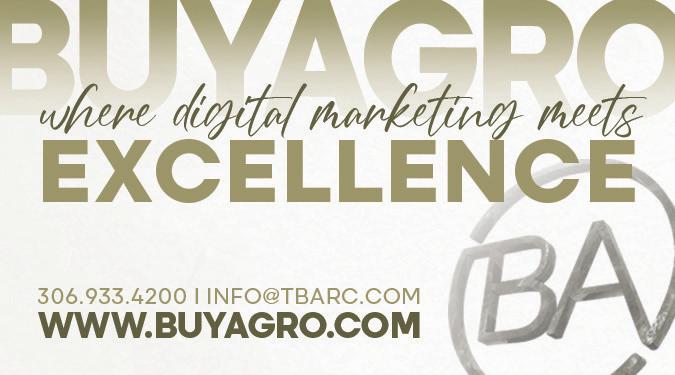






















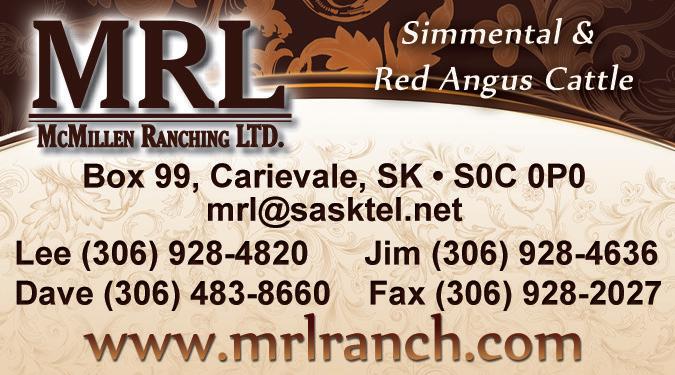




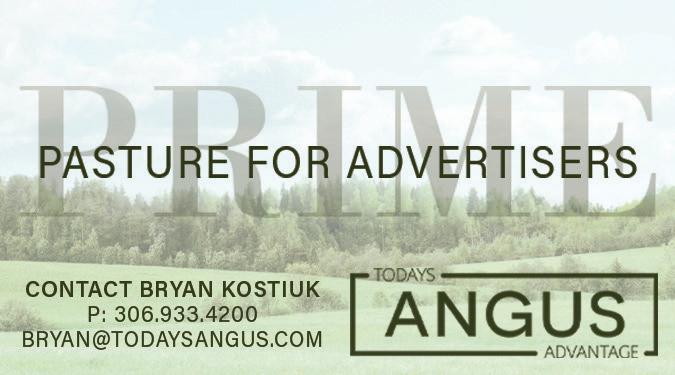



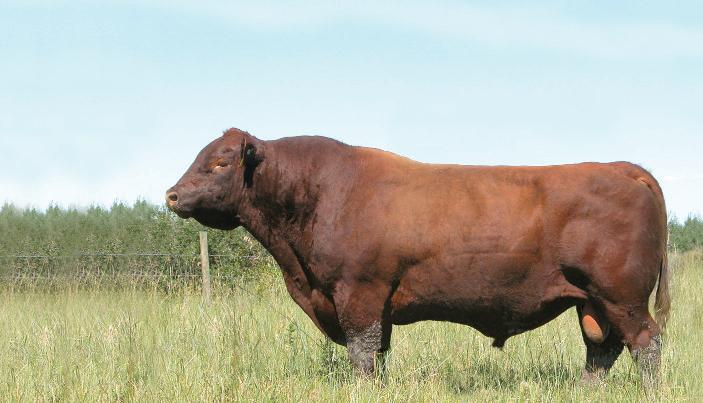




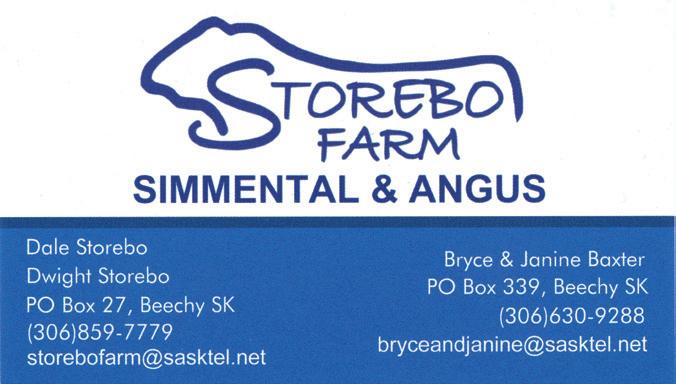



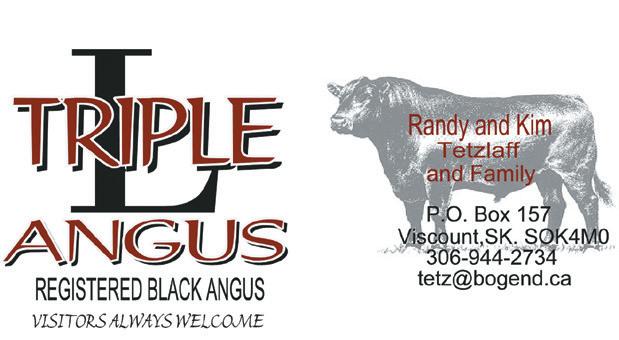



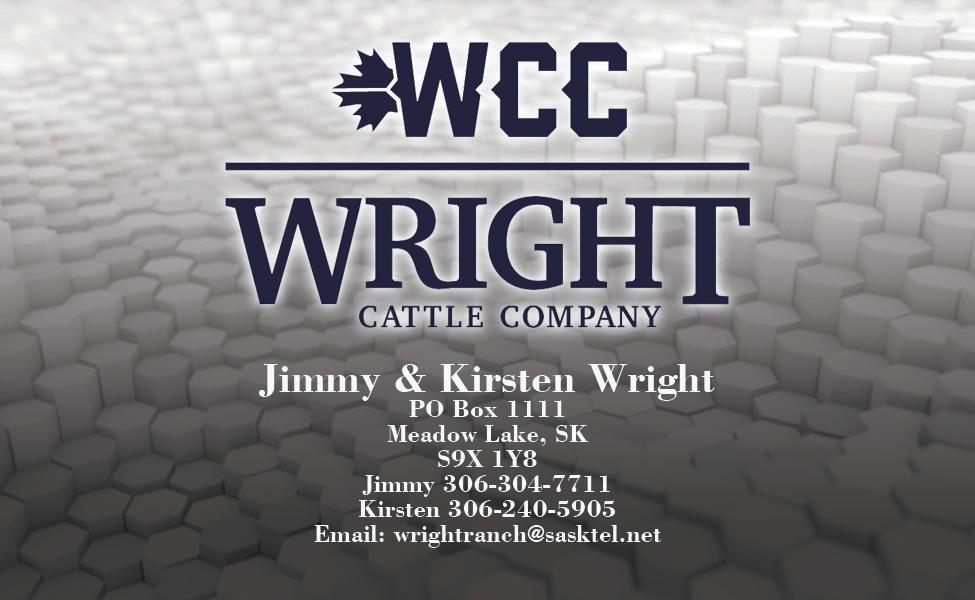




The Grimes and Hall families were recognized at CAB’s annual conference late September
- By MORGAN BOECKER

Good partners drive successful businesses. At Maplecrest Farms, Joanie Grimes and her family have forged relationships across the supply chain, aligning their high-performing Angus genetics and customer-first mentality to elevate both their businesses and the breed.
The outcome? A reputation for trust, quality and an unwavering commitment to the cattle industry.
Joanie, with daughter Lindsey and her husband, Adam Hall, raise registered Angus cattle with two primary goals: producing high-quality seedstock for a wide variety of environments and ensuring end-user satisfaction.
Their unique position brings together opposite ends of the supply chain—promoting everything from high-quality Angus genetics to the Certified Angus Beef ® brand with partners and consumers—and earned them the 2025 Certified Angus Beef (CAB) Ambassador Award
In 1998, Joanie and her late husband, John, road tripped across Kansas, which led them to change direction at Maplecrest Farms. What started as 40 cows has grown and expanded to an Angus seedstock business with more than 300 cows. They’ve also broadened their customer base.
“Folks in our region want their cows to look good, but we also understand and respect the bigger picture and our role as registered Angus breeders in the beef production chain,” Lindsey says, crediting her dad for teaching her this. “It’s a delicate balance and you have to be very disciplined.”
Patient study of pedigrees, examining how cattle are built and then choosing careful mating combinations has paid off.
“There’s some thought in the industry that you can’t have both,” Joanie says. “John was very successful in breeding cattle that not only produce Prime carcasses but also are very fine individuals that you are proud to look at in the front pasture.”
Hillsboro is only three hours from the CAB office and in closer proximity to many brand partners.
The family is always willing to attend food shows to represent Angus producers and share how cattle are cared for on the farm. They also host CAB ranch days throughout the year.
After dozens of tours, Lindsey says the biggest surprise is when guests realize the science and technology ranchers use.

They walk through the barn and see the semen tanks and where embryos are kept.
They show them where cows are flushed and then bred using in vitro fertilization.
“Those are things they can relate to because they understand from a human perspective,” Lindsey says. “It’s so fun to see their faces light up because they had no idea we use the same technology.”
Being ambassadors for CAB has shown them that everyone has a role in the beef supply chain.
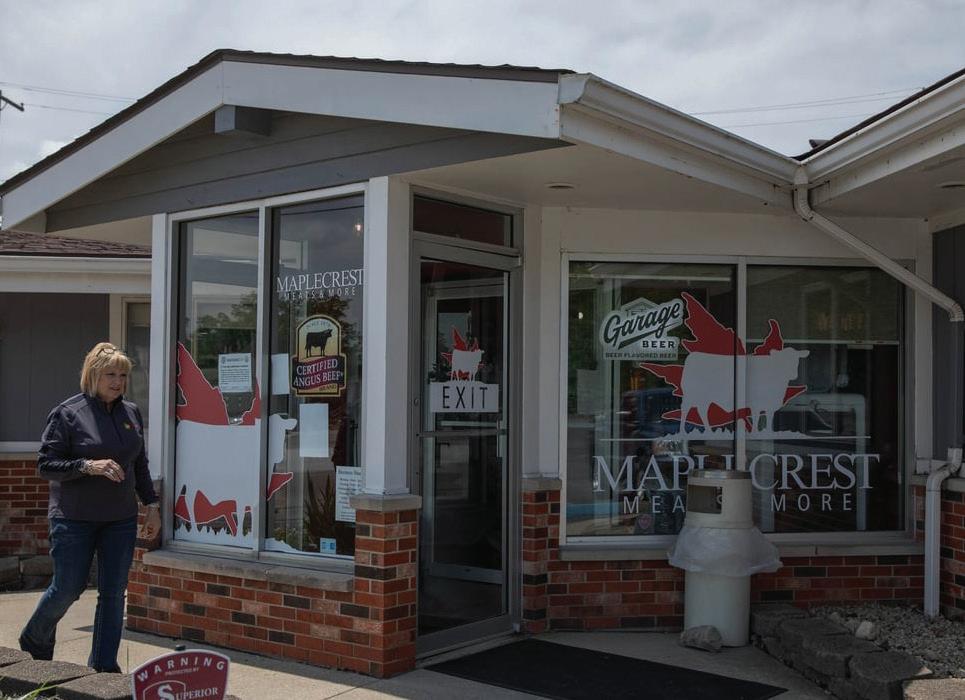
“Even though we’re at the beginning of the production chain, we’re always thinking about the restaurateur and foodservice distributors and how the decisions we make at breeding affect the eating experience they deliver to their customers,” Lindsey says.
And ultimately, the success of both their businesses.
From farm to fork
In the spring of 2021, they launched Maplecrest Meats, a direct-to-consumer meat business.
The new store not only gave Lindsey a larger role with the family business, but it also gave them another way to work with their customers to source beef. They tap into a supply of calves, still using Maplecrest genetics, to source a wider variety of ages for the store year-round.
This also gives their local bull customers another market for their feeder calves, Joanie says.
To be successful, they needed the right partner.
That’s how they became one of the first CAB Ranch to Table™ licensees. Maplecrest Meats also gives them a direct avenue to engage and talk with consumers.
“When we tell people our story at the store, one of the things we tell them is that everything that is in that freezer and every mama cow and every bull we own has had a 23andMe test,” Joanie says. “They kind of look at you [puzzled] and we tell them how we know genetically what makes them up.”
They test DNA for each animal and submit phenotype and performance data to the American Angus Association.
For years, this improved their cattle; now it’s helping their store succeed and grow.
All that work done today will be enjoyed on someone’s dinner table years down the road.
Realizing that, they’ll always be strong ambassadors for every step of the beef supply chain.

Signals in 2025 show strong demand for Angus cattle, beef products.
- By JESSICA HARTMAN, ANGUS COMMUNICATIONS
The American Angus Association® concluded a successful fiscal year in which registrations totaled more than 300,000 for the 11th consecutive year and were up nearly 2.4% from the year prior. Regular and junior memberships totaled 21,467.
Leading seedstock sales during a record year in the cattle markets, registered Angus bulls and females both garnered high-dollar prices.
Bulls averaged $8,395 and females bested that number by $41 – an increase of $1,200 and nearly $1,600 respectively compared to the year prior.
Demand not only supported the sale of cattle at a higher dollar but also an increase in the number of head sold during the same period.
These market trends were the focus of several sessions held at the 2025 Angus Convention, October 31 – November 2, in Kansas City.
“We are fortunate not only to enjoy this historic market, but do it as a leader in the industry. That is not something we take lightly,” said Mark McCully, chief executive officer of the Association, while addressing the membership at the convention. “We have a responsibility to continue to improve the Angus breed by supporting our producers.”
McCully said the Association remains focused on supporting the continued success of the Angus breed through programs, tools and resources that help producers meet their individual operation’s goals. During the fiscal year, the Association added and made improvements to its toolkit for members.

As a result of years of data collection and research, the Association released three new expected progeny differences (EPDs) in 2025: Functional Longevity (FL), Teat Size (Teat) and Udder Suspension (UDDR). Alongside the release, Angus Genetics Inc.
(AGI®) updated the Maternal Weaned Calf Value ($M) and Combined Value ($C) dollar value indexes ($Values) to account for the three new maternal EPDs.
At the close of the 2025 fiscal year, there were more than 433,000 combined scores for teat size and udder suspension and 8.9 million records collected from 2.1 million females behind FL.
To better communicate the value of registered Angus genetics and allow for a direct comparison to sires’ $Values, AGI® added $Values to their genetic testing product for commercial females, GeneMax® Advantage™.
The update creates a common language, so both buyer and seller can make direct comparisons and more easily evaluate a given bull’s genetic potential to meet the goals of a commercial herd.
These tools are possible thanks to decades of data collections efforts by Association members, who have built the largest single beef breed database.
In an ongoing effort to maintain the database and best characterize the current Angus population through data collection, Angus Herd Improvements Records (AHIR®) launched a new program to recognize
members committed to that effort. During its inaugural year, 129 herds earned Data Driven Herd recognition. AHIR also saw a 16% increase in enrollment in Inventory Reporting.
The close of fiscal year also marked one year of a partnership between AngusLink SM, National Beef Packing Co., LLC (NBP) and U.S. Premium Beef, LLC (USPB).
In a first-of-its-kind program, producers selling to USPB earned premiums based on the genetic merit of their cattle, as measured by the AngusLink Genetic Merit Scorecard SM.
Looking at data from August 2024 through mid-February 2025, over 44% of cattle that have qualified for the program have graded Prime; compared to industry average of 11% Prime.
Qualifying cattle have averaged more than $200 per head premium over selling in the cash market.
The partnership’s success has been a testament to the AngusLinkSM value-added program. Since 2019, premiums paid out total $94.5 million.
Over the last year, more than 287,000 cattle have been enrolled in AngusLink, resulting in producers earning an average premium of $20.92 per hundredweight.
Nearly 19,000 registered Angus bulls were represented in fiscal year 2025 enrollments.
Driving a growing demand for Angus genetics, Certified Angus Beef sold 1.235 billion pounds of branded beef with 17,000 licensed partners worldwide, the 10th consecutive year above 1 billion pounds.
Engaging producers across the industry, Certified Angus Beef concluded the second
year of its Raised with RespectTM campaign having facilitated the Beef Quality Assurance certification of more than 1,600 ranchers.
Serving the advertising and communications needs of members, Angus MediaSM created more than 19,000 custom sale book pages.
In the past year, the Angus Journal® printed 948 news articles, and the Angus Beef Bulletin® provided commercial readers with 239 industry news articles.
Downloads for the publications’ podcasts neared 140,000.
The Angus Foundation continues to expand its reach and support of youth, education and research; awarding $395,500 through scholarships.
Members supporting the mission donated more than $660,000 in unrestricted funds and $5,517,260 in additional donations and grants.
The Fund the Future campaign, which contributes to the unrestricted Angus Fund, was supported by 18 donors and raised more than $81,000 through the sale of donated lots.
To view the 2025 Association’s Annual Report and financial report, visit https://bit.ly/AAA_AnnualReport25.


Certified Angus Beef seeks applicants for its summer internships.
- By OLIVIA ROOKER, 2025 producer communications intern

Whether from the East or West Coast, and anywhere in between, Certified Angus Beef (CAB) interns experience the atmosphere of a full-time role while building their resume and portfolio.
CAB opens four internship positions each summer, guiding students as they apply their skills from the classroom in a real-world setting. All positions are geared towards students pursuing a career in agricultural communications, marketing or and digital media.
From their first day to their last, interns are valued members of the team. Experiencing what it’s like to work for the brand, from brainstorming sessions to executing projects.
“We give the interns a lot of autonomy to use their creativity to complete projects,” says Morgan Boecker, CAB producer communications senior manager. “Their managers and other team members are always there and willing to provide direction and intentional feedback, so that each intern walks away with valuable experience and work samples that add to their portfolios.”
The brand encourages upper-level college students who are driven to expand their skills in communications, immerse themselves in

meaningful projects and gain career mentors to apply. Selected interns will contribute to news stories, website content, social media posts, photography and videography.
Internships for the upcoming year include:
1. The multimedia intern assists with video and photo shoots for campaigns and practices editing skills.
2. The marketing intern will be engaging with brand partners and building promotional content for retail and service business use.
3. The social media intern monitors social platforms, evaluating analytics and overall consumer engagement.
4. The producer communications intern supports communication efforts for cattlemen and women, writing content for digital platforms and Angus Media publications.

The 2025 marketing intern, Grace Greer, from Dalton, Ohio, says she built confidence as she learned and grew her skillset over the summer.
Producer communications intern, Olivia Rooker, says that the summer challenged and refined the skills she learned at Oklahoma State University.
It also created an experience that will shape her expectations when she pursues a full-time role after graduation.
“Coming into the summer with a growth mindset set me up for success,” Rooker says. “It allowed me to learn from so many of my peers and gain a deeper appreciation for the brand and the work that goes on behind the scenes to make it what it is today.”
With new projects planned each summer, you get the chance to be involved in several industry events, ranch and partner visits, and contribute to the overall communication and marketing efforts.
Often, interns plan and organize projects that are executed by the team after their internship ends.
The Certified Angus Beef atmosphere could easily be described as family, says Alex Ramirez, this year’s social media intern. “Everyone is passionate about their work, and the company culture is one of the most welcoming environments I have worked in.”
Positions will be held in the CAB office located in Wooster, Ohio, with opportunities for travel throughout the summer.
Selected interns spend 10 to 12 weeks of their summer contributing to the brand.
To apply, students must submit a cover letter, resume and a link to their online portfolio that showcases their work.
Applicants may express which internship position they are applying for. For more information about summer internships for 2026, visit CABcattle.com/ internship.


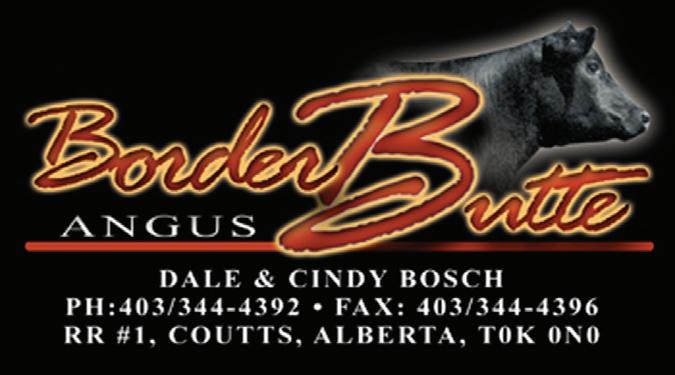



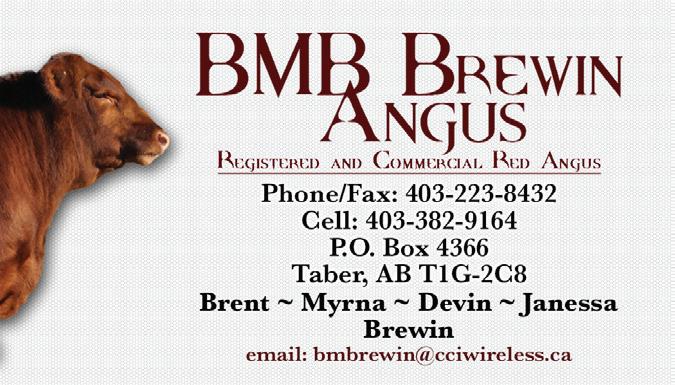







































Phone: 780-675-4664
info@olefarms.com www.olefarms.com
Kelly 780-689-7822
Graham: 780-675-0112
Residence: 780-675-3445

Kurt & Becky
(780) 755-3160 (780) 209-9999 Kurt Cell www.pedersenlivestock.com


Justin: 403-647-4095
Ricki: 403-625-1606 rjlivestock13@gmail.com











- By LINDSAY GRABER RUNFT

A far horizon swallows the sky across sparse grama and greasewood that sway under a pitiless sun while jackrabbits dart between cactus spines. Just over the Davis Mountain foothills, cowboys drive Angus cows toward catch pens.
It’s ranching, romanticized. Until you live it. On the Means Ranch, beauty is a thin veil over a desolate land. For four generations, the Means family has ranched in Texas. With a commitment to environmental sustainability, alongside quality Angus genetics, they earned the 2025 Certified Angus Beef (CAB) Sustainability Award.
What makes a ranch sustainable? To Jon Means, it’s simple: the same family, ranching on the same land, for the last 140 years. They could not have done that without sustainability.
Responsible use of water, caring for the land and its wildlife, destocking the herd for drought recovery and then building back with an eye toward grid premiums.
In 1979, Jon and Jackie Means were married and the El Paso girl moved three hours east to the Moon Ranch. She used a bleak term for their view. “Don’t call it that,” Jon had bantered. “It’s not a desert. We have grass.”
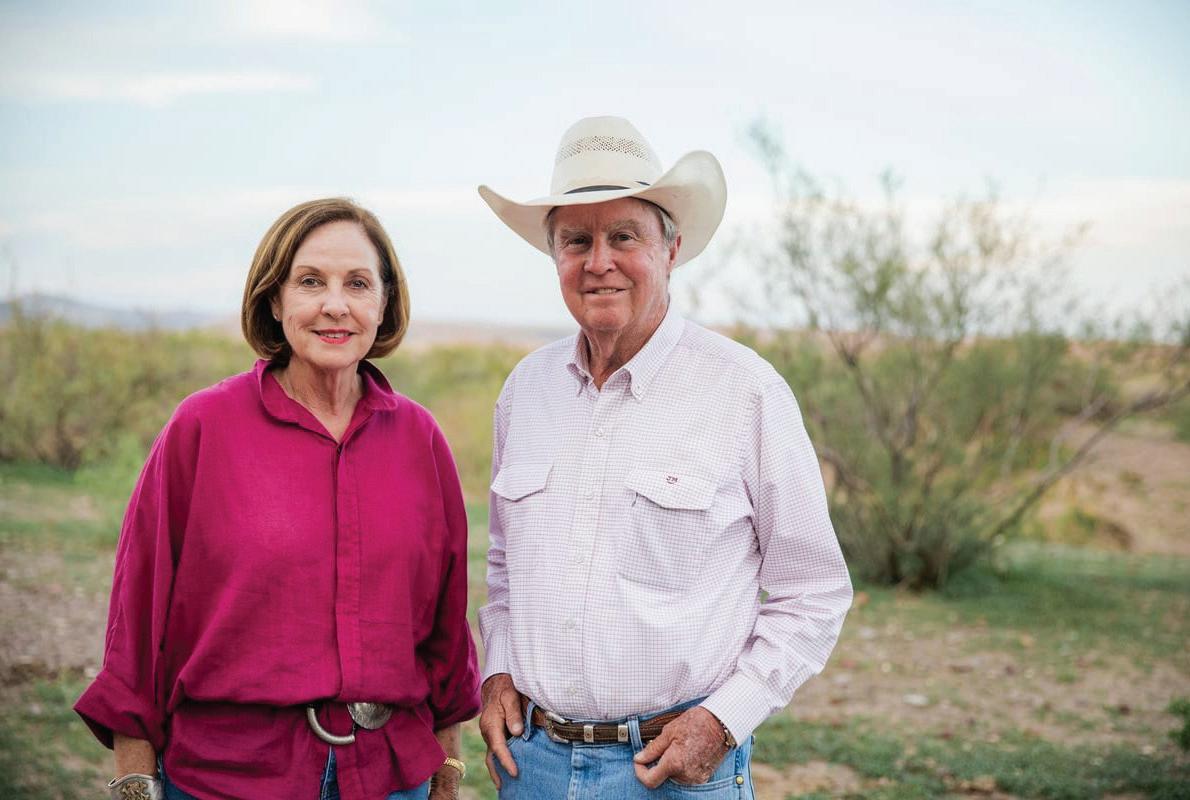
Joined with the Chispa Ranch to span 90,000 acres, it’s a big chunk of the Means Ranch Company, a decades-old enterprise the couple own. The original Y-6 ranch, established in the 1880s, was only split once and all remains in family hands.
“This land here is diverse,” longtime Means Ranch cowboy Clay Miller says. “And unforgiving.” Gravel roads wind through wide-open spaces, bending around mountains to catch pens and cowboy camps.
It all looks the same, and although framed plat maps line Jon’s office wall, he knows it like the back of his hand: Where and why fencelines were drawn, shifted to share a water tank with the Y-6 or to let cows get to the other side of a mountain.
Ranching revolves around the environment. Cow numbers are down from the typical 1,200 head because of long, extreme drought.
Jackie says running the ranch takes constant management with the diligence of “operating on the margins.”
And probably some faith, too, that enough rain will fall at the right time. The 40 types of native grass are resilient but still need some moisture, and summer rains are key.
Thirty to 40 years ago, average annual rainfall was 10 inches, but Jackie cannot remember a year in this century when they got that much.
Multi-year droughts have challenged natural resources to where rotational grazing and water conservation are mandatory. “We use every inch of this ranch as best we can,” Jackie says.
Jon says they’ve been deliberate with pasture use, careful not to overgraze and allowing time for the land to heal. Standard stocking allows 60 acres per cow, but they add range cake when necessary.
When Jon’s grandfather was growing up, the Y-6 and Moon Ranch (combined) had only six wells. Today, the Moon Ranch has more than 150 miles of pipeline running water to troughs for cattle. Solar panels replaced windmills on all 22 wells, while covers limit evaporation on storage tanks.
Birds and wildlife benefit from sustained conservation too, Jackie says. Lacking native trees on the ranch, the Meanses planted adaptable multi-purpose trees—shade for cattle and habitat for birds. They added programs to feed quail and deer.
Everything works in harmony. “How else would we use it?” Jon says. “The land needs the cattle and the cattle have to have the land to survive.”
In the early 1960s, Jon’s father was among the first here to begin switching from Herefords to Angus.

Fifty years of striving to breed hardy Angus cattle to fit the terrain led to good structure, with sound feet and legs to travel long distances over rough terrain.
Through the years, Jon and Jackie have traveled the United States to find new genetics and expand their bull battery. Besides phenotype, Jon uses EPDs, looking closely at birthweight, fertility and carcass traits.
“We buy bulls that will work for us here first,” he says, noting essential fertility. “We’ve got to have a live calf and get that live calf to the feedyard.”
He culls cows that do not breed back. Angus cows are dual-purpose here, with mothering ability as well as terminal traits.
To stay in production, cows must be thrifty, have nice udders and raise a calf that performs in the feedyard and on the rail.
After processing and weaning, steers and heifers part. The latter are developed for replacements while steers are shipped to wheat pasture till they average 800 lb.
Then it’s on to the Triangle H feedyard at Garden City, Kan., where the Meanses retain ownership and sometimes partner with the yard.
“All of our cattle go through that program and they do amazingly well,” Jon says, noting years of data. They’re predictable, and they perform well on feed. It all ladders up to profitability.

In recent years, Means Ranch Company cattle have had a 53% CAB acceptance rate and 48% graded Prime, including those qualifying for CAB Prime.
“It always surprises us that our cattle can be as healthy and big as they are, in a land that’s as arid as this,” Jackie says. It’s a humble statement. Jon and Jackie do what it takes to raise high-quality cattle in a challenging environment—no excuses.




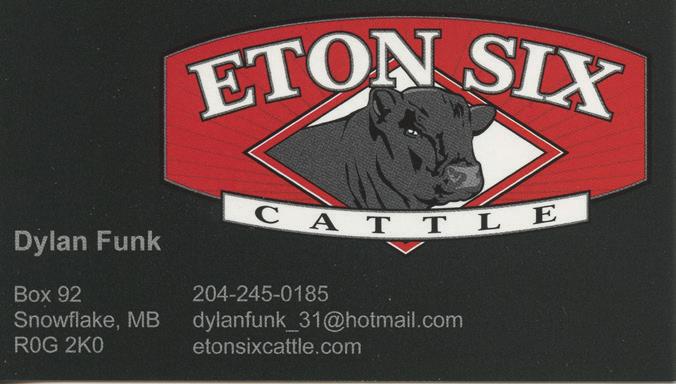























Gerald's #: (905) 252-6315 Email: galten.farms@sympatico.ca Gerald
Office #: (905) 898-4463
Office
Gerald's #: (905) 252-6315 Email: galten.farms@sympatico.ca Gerald
(905) 898-4463

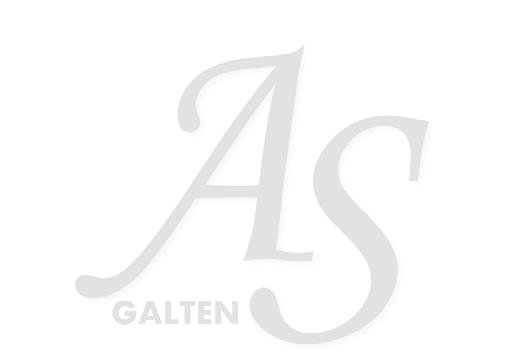

































Last week, we hosted our Annual Conference in Austin, Texas, where packers, distributors, retailers, restaurateurs and producers united to honor their shared commitment to deliver the Certified Angus Beef ® brand to consumers worldwide. This event is for our partners first, with content specifically built to support their teams to sell more Certified Angus Beef ® brand. But it’s also a time to celebrate the hard work happening across the supply chain to not only raise high-quality Angus cattle, but also the accomplishments of our retail and foodservice partners.
Below, we highlight this year’s seven producer awards, who were recognized last week on the big stage.
7 Families Earn Production Awards

Seedstock Commitment to Excellence: Tehama Angus Ranch
The Borror family has raised Angus cattle for three generations, among rows of orchards across the Northern California rangeland. Bill, his son Kevin and his grandson Bryce Borror balance maternal strength, carcass merit, and customer profitability while stewarding decades-old pastures and using data-driven breeding decisions.
Bruce Cobb EVP - Production


Commercial Commitment to Excellence: Willis Ranch
Six generations of ranching on Wyoming and Utah lands shaped the Willis family’s approach to raising Angus cattle. In the high desert, Willis Ranch combines traditional stockmanship with modern genetic tools, like GeneMax® Advantage™ and AngusLinkSM, to produce cattle that thrive and meet high-quality carcass targets.

At 4K Cattle LLC near Hills, Minnesota, the Knoblochs focus on quality over scale. They’ve built a system where detail, consistency and relationships deliver premium results. The Knoblochs pens are filled with home-raised calves and those sourced from Dakota ranches. All fed cattle are marketed on the grid through Upper Iowa Beef.

In the foothills of the Canadian Rockies, brothers Austin and Malcolm Cross are building on a century of family history on this land. They focus on quality from the start, with clear intentions to raise cattle that perform well in the pasture and consistently meet high standards for carcass merit.

Across the Davis Mountain foothills in Texas, cowboys drive Angus cows over sparse grama and greasewood under a pitiless sun. Jon and Jackie Means manage the ranch with sustainable grazing, water conservation and careful selection of Angus genetics, producing highquality beef while protecting the environment.

The beef business is built on partnerships, some sealed by pen, some with a handshake. At Maplecrest Farms in Hillsboro, Ohio, Joanie Grimes and her family bridge every step of the beef supply chain, from raising Angus seedstock to managing a retail meat store and hosting food industry partners.

In the Texas Panhandle, the Zybachs raise cattle with care and lift others along the way. During his time as president of the Texas Angus Association, Steve Zybach saw the need to help smaller producers be more profitable. He acted on it, creating value-added program feeder calf sales in conjunction with various auction barns across the state.
Carcass weights have been climbing for years, but 2025 is really showing how much things have changed. So far this year, fed cattle carcasses are averaging 24 pounds heavier than last year—and a whopping 46 pounds more than in 2023. That’s way beyond the usual 5.5-pound annual increase we used to expect.
It all started with the 2020 pandemic backlog, which added 26 pounds to carcass weights almost overnight. Everyone thought that would correct itself, but it didn’t. Instead, weights kept creeping up, with only minor dips due to weather. By now, the industry has basically embraced this new normal.

Fast forward to early September 2025: carcass weights are just 3 pounds shy of the all-time weekly record set in January. If fall follows the usual pattern, we could see a new record of 940 pounds in November. Steers, which are averaging 81 pounds heavier than heifers, could hit 973 pounds. Still, it’s not guaranteed. Weights have already jumped 14 pounds in just four weeks, so the pace might slow. But unless something shifts—like packer demand, weather, or feed costs—2025 could average 922 pounds overall.
Bottom line: heavier carcasses are here to stay, and the trend isn’t slowing down much.

- By BRILEY RICHARD , freelance writer for Certified Angus Beef
Demand for high-quality beef persists. But with that demand comes challenges. From tight cattle supplies to higher costs and increasing pressure on retailers to deliver a consistent eating experience, the pressure is on.
At the 2025 Feeding Quality Forum, David O’Diam, vice president of retail for Certified Angus Beef (CAB), addressed the current retail beef environment, highlighting both opportunities and challenges in today’s marketplace.
O’Diam noted that while cattle numbers are down, beef quality has held steady, providing an important foundation for retailers to merchandise CAB. “While there’s less overall total fed cattle, the quality in this herd is outstanding,” O’Diam said. Even with tighter supplies, retailers can still count on enough highquality beef to sell. And that’s a good thing.
Beyond supply, the dollars and cents are front of mind, too. Prices have shifted significantly in recent years. Following the pandemic disruptions of 2020, and shifting economy, consumers are still absorbing increasing prices. Since COVID-19, carcass values have increased by more than $1,500 on the box side. As prices rise, consistency becomes even more critical to ensuring consumer satisfaction and customers at the meat counter.
“One of the most detrimental things that can happen to our industry is having a bad eating experience when beef is this expensive,” O’Diam said. “That would be more detrimental to our industry than high prices of high quality.”
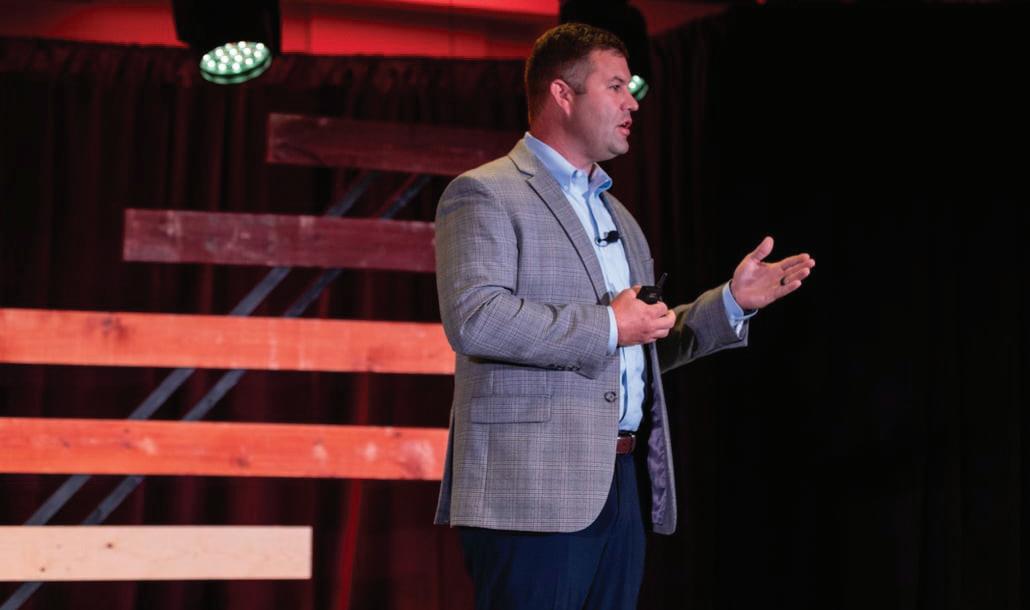
At the end-user level, Certified Angus Beef ® brand product offers a repeatable eating experience that protects consumer trust.
That consistency is especially important during key promotional periods, when retailers move tremendous volumes of beef. O’Diam explained how weekly features can quickly multiply into large-scale demand. “Seventy percent of their volume on a weekly basis comes from that front page feature. If it generates a million pounds, that’s about 25 truckloads. It’s about 2,500 or 3,000 head of cattle in one week.”
Such promotions create constant pressure to secure product in advance. The environment in which the CAB sales and product services teams interact with partners has changed. Conversations center on current supply dynamics and how beef buyers can navigate them to ensure they have beef available for heavier sales periods.
But what about the other animal proteins? Even in the face of competition from pork and poultry, O’Diam said demand for premium beef remains strong. That demand exists because Angus ranchers have built it, delivering a quality product time and again that keeps consumers coming back.
“We are up as a retail division in light of the smallest cattle herd and in light of the highest prices ever. This is the demand that this room has created.”
Momentum continues to lean toward premium beef.
“There’s more demand for [Prime] product than what we have available,” O’Diam said. “It’s item specific and there’s a lot of caveats to it, but the reality is we are demanding more Prime today than ever before and selling it specifically at retail.” For Angus ranchers, the path forward is clear: continue targeting CAB and pushing for Prime.
The 2025 Feeding Quality Forum was sponsored by Alltech, AngusLink, NCBA Cattlemen’s Education Series sponsored by National Corn Growers Association, Diamond V, Drovers, FeedLot, Rabo AgriFinance, Select Sires, Selko, and Upper Iowa Beef.

Bryan Kostiuk Editor
306-933-4200 C: 306-292-7763
Chris Poley Marketing C: 306-220-5006
Shane Michelson Marketing C: 403-363-9973
We appreciate your interest in Today’s Angus Advantage and hope you have enjoyed this issue. To receive further issues, please fill out the following subscription form and return it along with your payment (prices listed below) to:
Today’s Angus Advantage Box 2330, Warman, SK S0K 4S0 P: 306-933-4200 info@todaysangus.com www.todaysangus.com
Please check one of the following:
□ Canada $50.00 TAX Included
□ United Staes $60.00 TAX Included □ International $60.00 USD
Make cheques payable to Today’s Angus Advantage
Farm Name ______________________________________
Name ____________________________________________
Email ____________________________________________
□ We would like to advertise in your next issue, please contact me. □ Renewal
Credit Card Payment □ MasterCard □ Visa
Name ___________________________________________
Card Number: ____________________________________ CVC ______________ Expiry Date ___________________
Ben Wright Marketing C: 519-374-3335
Levi Rimke Marketing C: 204-851-4515
Booking Deadline Material Deadline Camera Ready Deadline Bull Buyers Guide Special Issue - Herd Sire Issue January 2 January 6 January 13 Spring Issue - Female Issue 17 22 27 Summer Issue - Early Sales & Prospects July 10 July 15 July 22 Early Fall Issue - Sales & Shows August 29 September 5 September 12 Late Fall Issue - Late Sales & Shows October 10 October 15 October 19
ADVERTISING RATES
*Plus GST/HST - Yearly Contract discount 15% (Card Ads Exempt)
Standard Issue Spring, Summer, Early Fall, & Late Fall Issues
Page
Special Issue Rates Bull Buyers Guide Special Issue
Page
Card Ad Rate
(All Five Issues) $250.00




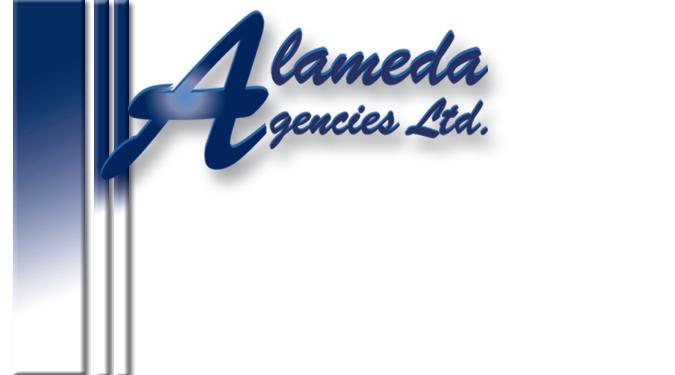










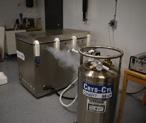

























COCHIN,
KISBEY,
SATURDAY, APRIL 18, 2026




